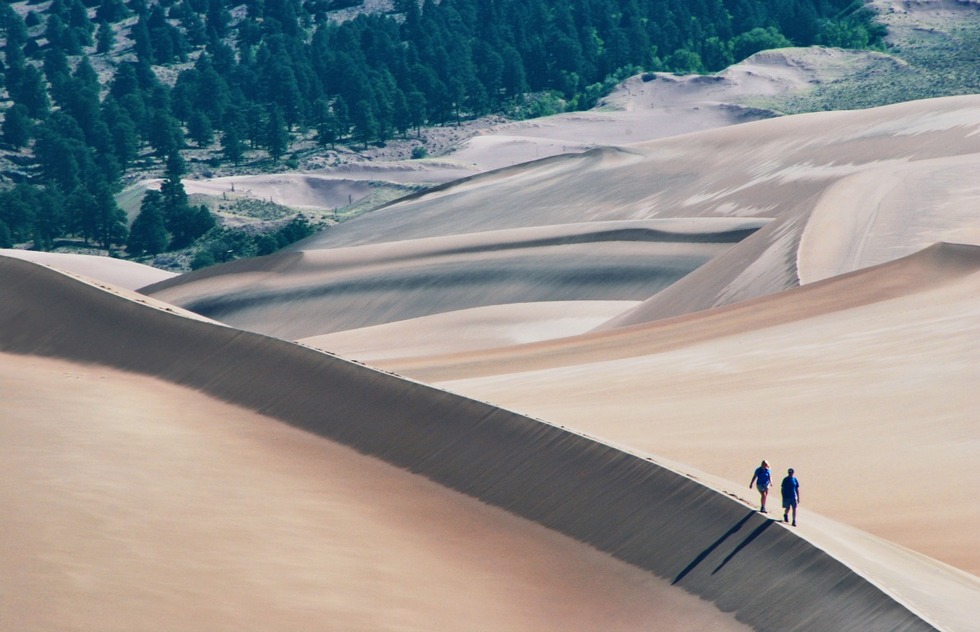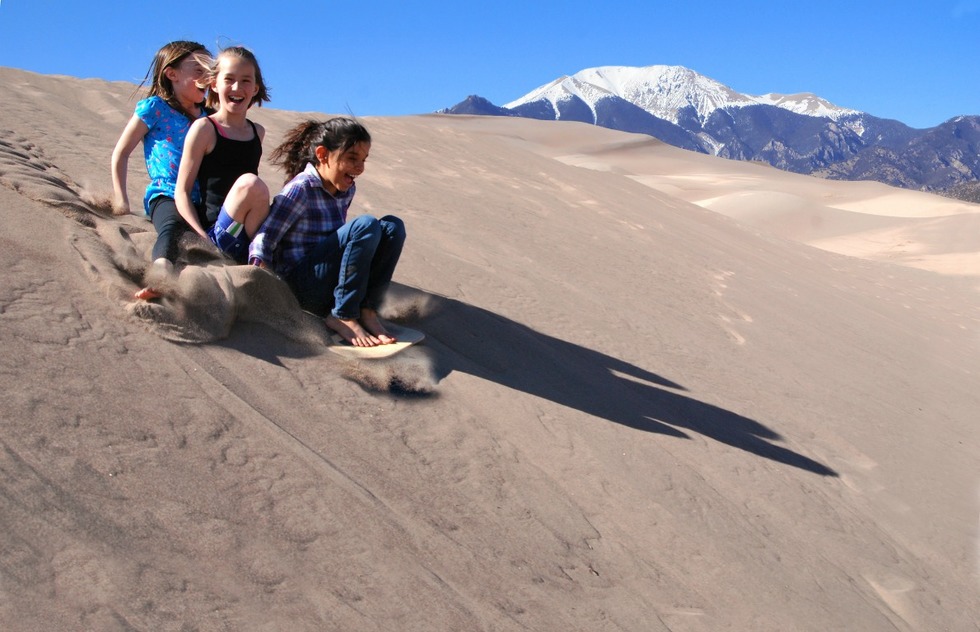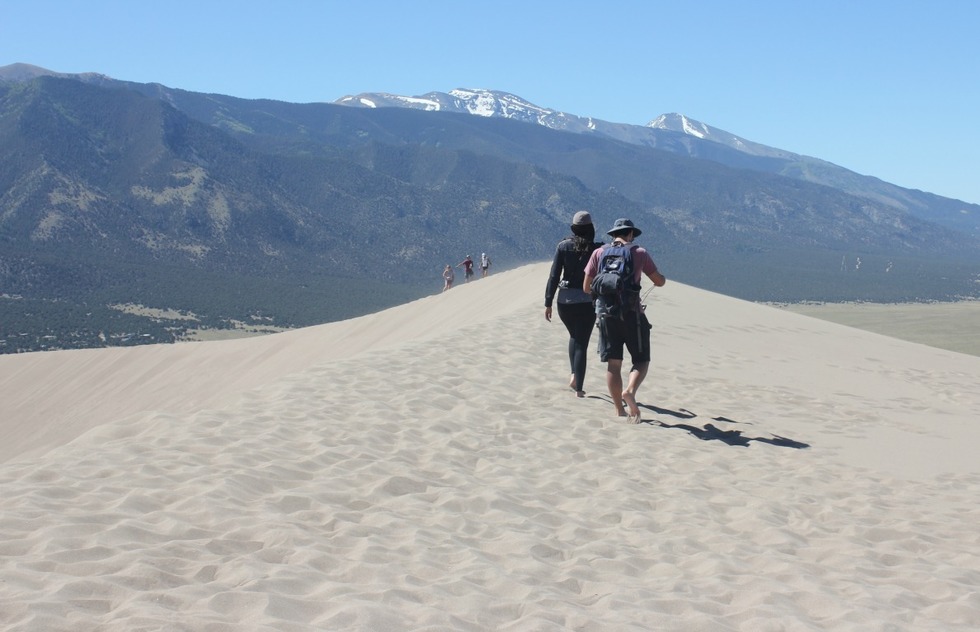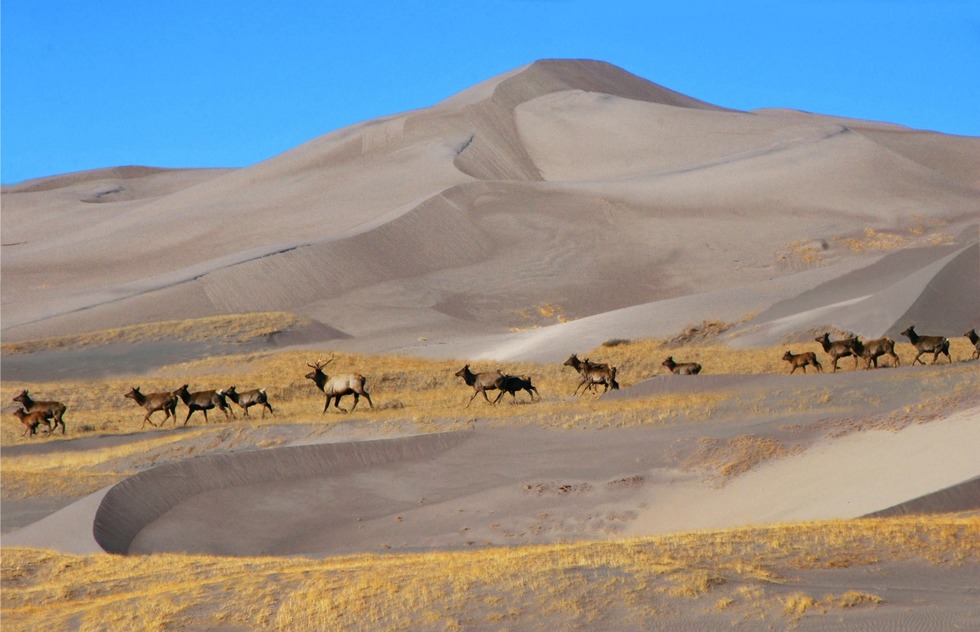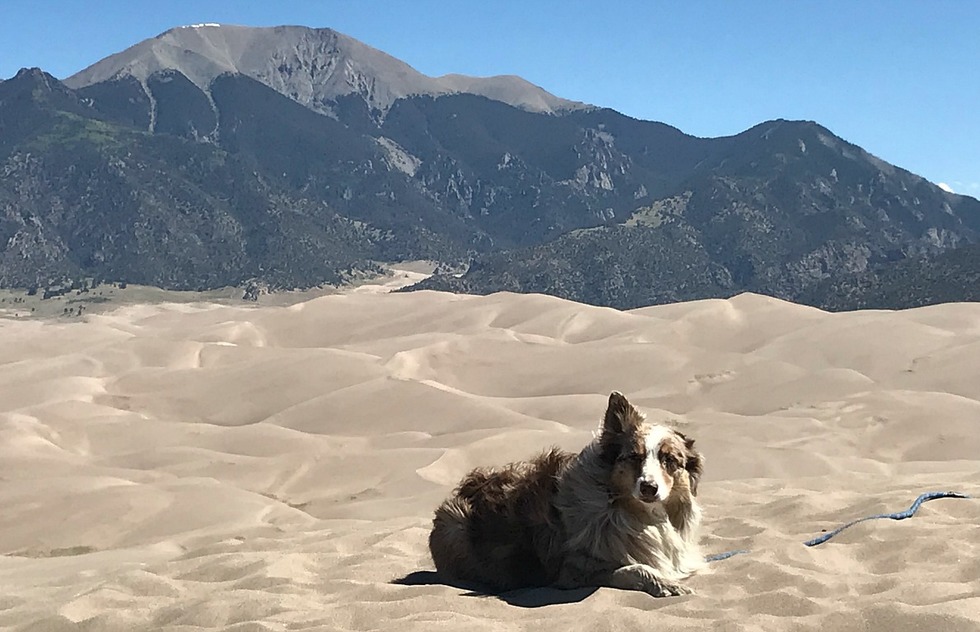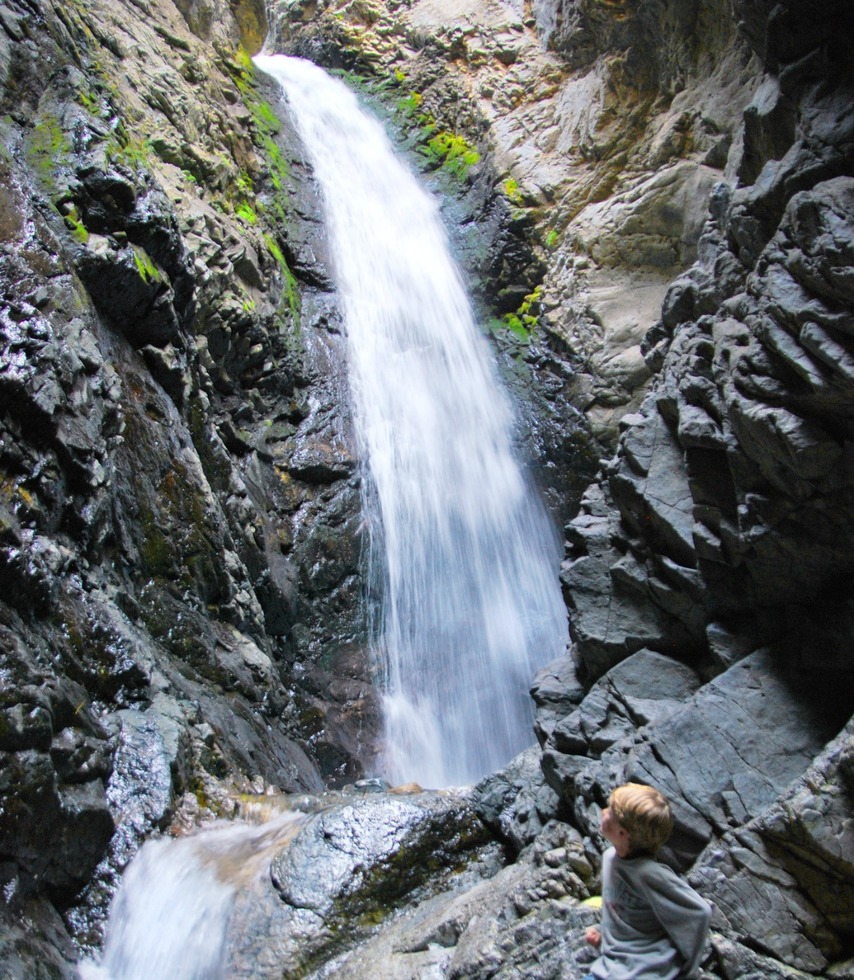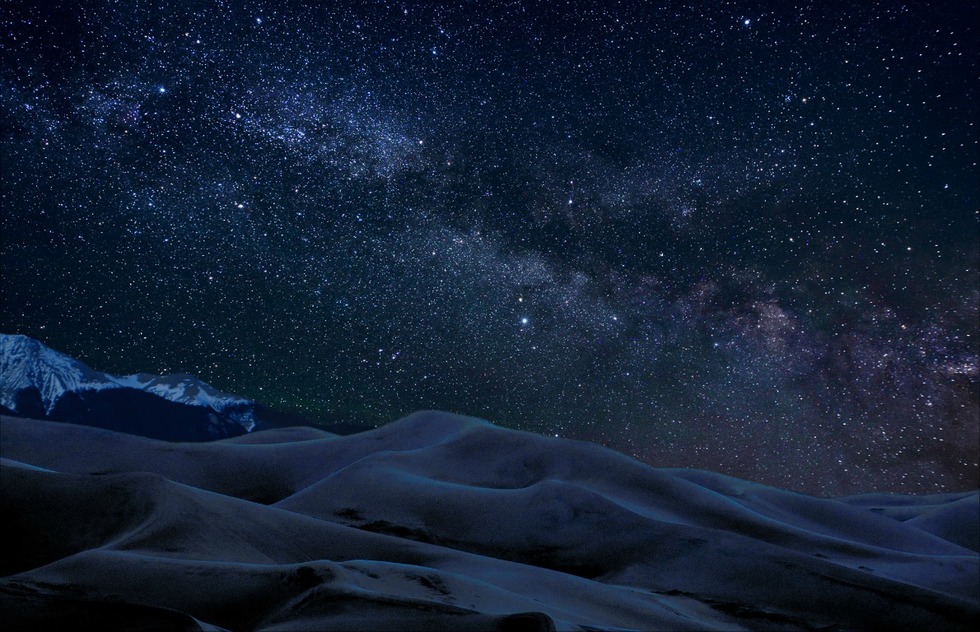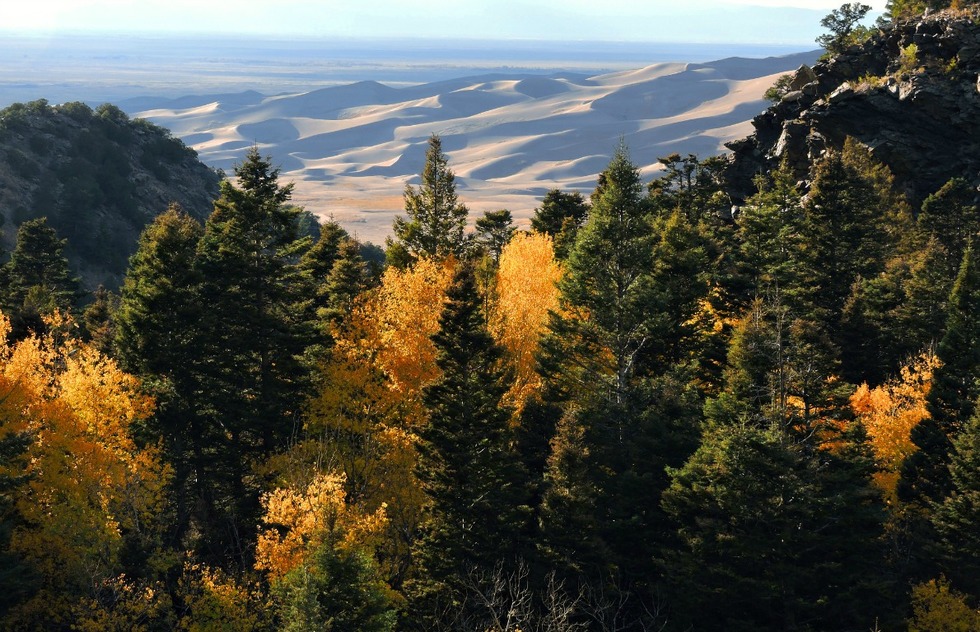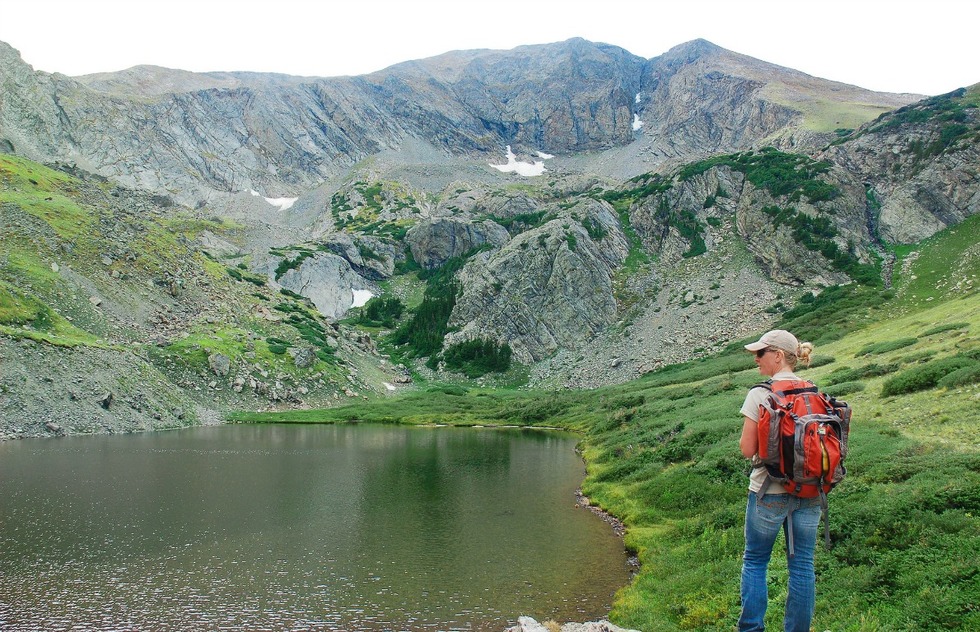10 Things to See and Do in Colorado's Most Underrated National Park
By Jorie LarsonAt Great Sand Dunes National Park and Preserve in southern Colorado, the jagged, snow-capped peaks of the Sangre de Cristo Mountains plunge into a bowl of undulating sand dunes—North America’s tallest at more than 750 feet (229m). In most states, the park would be a banner attraction, but in scenery-rich Colorado it’s an unheralded gem, pulling in nearly 12 times fewer annual visitors than Rocky Mountain National Park (located about 250 miles/402km due north).
And yet simply to stand and marvel at the dunes is worth the three-hour haul from Denver. Not that you have to just stand there: In this gigantic sandbox you can hike up and sled down dunes, make a splash at a natural beach, go tubing along a river, and camp out under the stars in sandy seclusion. Discover our 10 favorite things to see and do at this under-the-radar oasis.
It’s not a shimmering desert mirage. All of those park-goers really are unloading wooden sleds from their cars and schlepping them to the dunefield. You can rent sand sleds from Great Sand Dunes Oasis, a campground and cabin outpost just beyond the park entrance, for a daily fee. Once you’ve got your gear, trek to the top of the nearest dune, use the wax bar included with your rental to juice up the bottom of your sled, and let ‘er rip. Wiping out is half the fun, even if it results in a mouthful of sand. You can also rent a sandboard—the snowboard’s warm-weather cousin—and attempt to shred the slopes while standing up.
And how, exactly, did the dunes end up here? Sand left over from long-ago-receded lakes remains caught between two mountain ranges. Opposing winds continuously batter at the sand, lifting it to form dramatic peaks.
You wouldn’t think you could float in an inner tube next to a bunch of sand dunes—but that’s exactly what you can do on Medano Creek in late spring. The water typically flows from April through June, but everything depends on the year’s snowmelt. Though the creek is very shallow, tubers and skim boarders get a boost from “surge flows,” a rare phenomenon caused by water building up behind sand deposits in the streambed before finally bursting through, generating waves and forward momentum like a natural Slip ‘N Slide. The fun is usually over by July or August, when most of Medano Creek dries up for the year.
The park has plenty of short-ish hikes if you’re looking for a quick stretch of the legs. Montville Nature Trail (pictured) is a flat half-mile (0.8km) loop with forest and dune views, while Sand Sheet Loop Trail sets out for a quarter of a mile (0.4km) through the grasslands near the visitor center. For a panoramic view of the dunefield, hike to Dunes Overlook from Piñon Flats Campground (the trailhead starts in Loop 2). This gently sloping, 2.3-mile (3.7km) round-trip hike offers spectacular views of the first ridge of dunes.
Ambitious hikers try to bag the two tallest peaks in the 30-square-mile (78 sq.-km) dunefield: High Dune (699 feet/213m) and Star Dune (755 feet/230m). Neither is for the faint of heart or weak of calf muscle—imagine trudging up a near-vertical incline through shifting sands that on summer afternoons can reach a scorching 150 degrees Fahrenheit (66 C). Intrepid trekkers are rewarded at the top, though, with a panoramic peek at acres of dunes that aren’t visible from the valley floor. It takes about two hours round-trip to reach High Dune and five hours to summit Star Dune, the tallest sand dune in North America.
Pro tip: Plan your dune hikes in the early morning or early evening to avoid the heat and summer thunderstorms that roll in.
Great Sand Dunes National Park is home to a diverse crop of animals and insects, some of which are found nowhere else on earth, like Ord’s kangaroo rat (sorry, but it looks a lot more like a rodent than a marsupial) and the giant sandtreader camel cricket. Dusk and dawn are the best times to spot cuter critters. Look for elk, pronghorn, and mule deer in the grasslands that line the entrance road. There are also bigger mammals, including black bear and Rocky Mountain bighorn sheep. You might even spot a bobcat slinking along Mosca Pass Trail.
Great Sand Dunes is one of the most dog-friendly national parks in the country. In fact, at the entrance gate, rangers hand out a flyer detailing the best times and places to experience the place with your pooch. The flyer reminds visitors that only “responsible pet ownership” will allow this privilege to continue—the National Park Service’s way of saying, “Everybody be cool.” Leashed dogs are allowed almost everywhere, including the main area of the sand dunes (all the way up to High Dune) as well as on hikes to Dunes Overlook from Piñon Flats, Wellington Ditch Trail, and Montville Nature Trail.
Zapata Falls provides a blissful escape from the desert heat. Located about 8 miles (13km) south of the entrance to the national park, the mile-long (2km) hike to the cascade starts up a rocky slope before meeting the babbling South Zapata Creek. Trek upstream for a few minutes (wear sturdy hiking boots or bring water shoes) as the slot canyon walls seem to close in on either side. Finally, at the back of the crevasse, you’ll find the 20-foot-tall (6m) waterfall. The hike is worth taking for the shade and refreshingly cool water alone. Views of the dunefield are a bonus.
You’re just one backcountry permit away from this magical scene: you, your illuminated tent amid a sea of dunes, and the Milky Way lit up against the inky sky in all its splendor. To earn your own little slice of sandy real estate for the night, plan on arriving at the visitor center when it opens. Park rangers issue daily permits allowing up to 20 parties of six people each on a first-come, first-served basis. There are no designated campsites, and you’ll have to trek with your gear at least 1.5 miles over the first dune ridge before you set up camp. This helps maintain a sense of solitude and discourages campers from tenting on the sandy beach right outside the visitor center. As the park rangers say, “If you can still see the visitor center, you haven’t gone far enough.”
When you grow weary of dumping sand out of your boots, it’s time to explore the park’s alpine side. Set out into Great Sand Dunes Preserve with a hike on the Mosca Pass Trail, which crests up and over the Sangre de Cristo Mountains behind the dunefield. The 7-mile (11km) round-trip trail stretches past wildflowers and through aspen and evergreen forests, ending at the Mosca Pass summit at 9,737 feet (2,968m). Native Americans and early settlers once used this route to travel in and out of the valley. Looking for something a little tamer? The blissfully flat 2.5-mile (4km) Wellington Ditch Trail splinters off from the Montville/Mosca Pass Trailhead, offering views of the dunefield as the path wends toward Piñon Flats Campground.
You’ll need a four-wheel drive vehicle to tackle what Medano Pass Primitive Road throws at you—namely, sand, rocks, and creeks. On a summer day when the sand is soft, you’ll likely have to let some air out of your tires in order to churn your way through the sandy path. There’s a free tire pressure station at the park’s amphitheater where you can fill them back up. Stop along the way for a picnic at Sand Pit or Castle Creek, then continue on until you reach the road’s apex at Medano Pass, 9,982 feet (3,043m) above sea level. From here, hikers can trek to the tranquil waters of Medano Lake (pictured) on a trail that climbs 2,000 feet (610m) over 7.4 miles (11.9km). Those with two-wheel drive vehicles can trundle along the Point of No Return route, which, despite its name, has a convenient turnaround.
Now that you've discovered Great Sand Dunes, take a look at 12 more of America's most overlooked parks.





